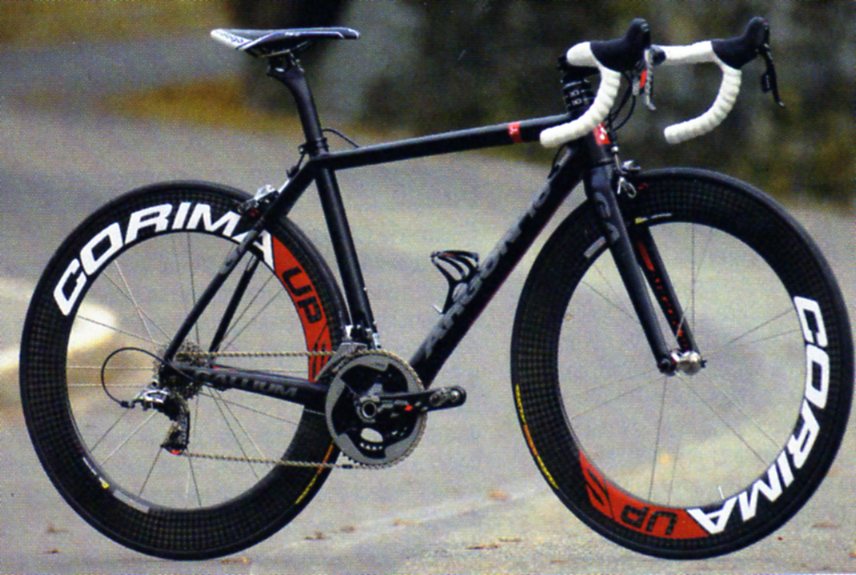Interbike 2012: pedals
I had three encounters with pedals at Interbike 2012. I'll review them in order of interest.
Least interesting by far was Speedplay. I didn't see anything there, other than the Syzr off-road pedal which was at the show last year. Indeed, this pedal was shown in a different form as far back as 2009 ("almost ready for production"): that's four Interbikes. Yet to my amazement someone at the Speedplay booth still talking about it not being ready yet for production. I remember doing a group ride in San Diego 1990 or 1991 where I guy I don't know who called himself Richard talked about his new pedal prototype which he was going to take into production and I laughed: the pedal market was already saturated with big hitters like Look, Shimano, Time. How was some guy in San Diego going to compete with them? So no criticism of Mr. Bryne and company, but I find the ongoing delay curious. Sometimes, it seems, it's easier for a little guy working in a machine shop to move ahead with something than it is for an established company with enormously superior resources.
Next was the Polar-Look power pedal. I was really looking forward to playing around with this, but on the Thursday I was at Interbike, the model they had at the Polar booth wasn't set up, and I didn't see anything at the Look booth (although maybe I missed it). The pedals were on a stationary bike but the "pods" were in the box. I was super-surprised by this, since the system has been used on pro rider bikes for all of this season, and it's nominally for sale to customers. Maybe they got it set up by Friday.
Garmin, on the other hand, wasn't showing anything of their Vector pedal system except for a poster. I know they received a lot of questions about it. Garmin seems to be taking a "we'll show it when we're actually ready" approach in some contrast to Look-Polar. The close-to-the-chest approach is in striking contrast to the old Metrigear days with the Vector blog, but back to the small-scale versus large-scale development theme described for Speedplay.

Ultralite pedal

Ultralite pedal cleat, slightly warn from walking
Next was the Ultralite Sports pedal. Here's a description from Bike Radar. I really, really liked this. In mechanical design, less is more, and the elegance of this system makes for a lightweight, easily maintained, low-stack-height solution. I'd love to try it but if you add the cost of the pedals to the cost of switching from 4-hole "Speedplay" shoes to 3-hole it doesn't make much sense.
The pedal is inspired, perhaps, by the Aerolite pedal (now 25 years old or so). The engagement is different, however. The Aerolite pedal "snaps on", and disengagement is via supination. With the Ultralite, however, you disengage by sliding the foot inward then pulling out.
Most of my discussion with the guy to whom I spoke was whether the foot would come out in a crash. He said when you hit the ground on the side your foot will hit before the pedal and that will push your foot inward, causing the cleat to release. That doesn't take care of the opposite side, but I strongly suspect in the violence of a crash recoil will send the opposite foot inward at one point as well. Any new pedal system is going to take a bit of training for engagement and release, but somehow it always seems to work out fine. Mechanical simplicity results in low weight, low stack height, and simple maintenance and I love all of these.
As with Speedplay, Polar/Look, and Garmin, however, there was no demo. Maybe if I'd been able to try the pedals myself I'd have been hooked.
One issue which I associate with new pedal designs is how well would they work with Garmin Vector? Here's a schematic of the Ultralite:
Note there's two contact regions between the cleat and the pedal: one at an outer radius and one at an inner radius. The cleat doesn't move much laterally except during release, when it slides inward to disengage the outer radius from the spindle. This relative simplicity of the cleat-pedal interface, I feel, is highly suitable for determining applied force. I personally hope Garmin's able to branch out from their current pedal choice, driven by existing pedal market share, and consider designs such as this one.
Anyway, it was fun finally being at Interbike and I'm always excited by seeing new designs and engineering applied to my favorite past-time.


Comments
I really like the idea of a power function in the pedals though - much less of a retrofit issue than in the crank or hub.